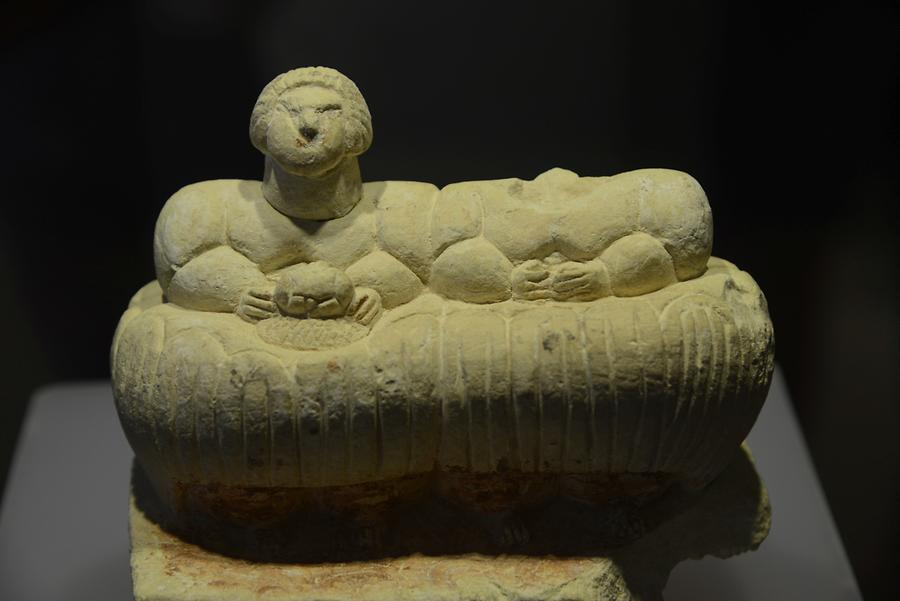| Malta Short Let: Cozy Stay in Gzira | |
|
Sliema Area Modern Designer Finished 2 Bedrooms + Games Room. First floor with Maltese Balcony Large back Terrace with swinging sofa Fully Airconditioned + Full Kitchen 3 TVs, including 65” with backlight. |
 |
|
Book Now: Google Travel | Direct (Cheapest) | Booking.com | Airbnb |
|
The Ġgantija Temples are monumental stone structures that have withstood the test of over 5,600 years, predating even the pyramids of Egypt and Stonehenge. You can find them on the idyllic island of Gozo—a place where history comes alive and whispers tales of a bygone era. If you’re a lover of history or archaeology, this destination promises to captivate your imagination and stir your soul.
An Architectural Marvel Beyond Time
Perched atop a gentle hill in Xagħra, the Ġgantija Temples are among the oldest free-standing monuments in the world. Crafted during the Neolithic period, these megalithic temples are a testament to the ingenuity and sophisticated craftsmanship of our ancestors. How did a civilization without metal tools or the wheel manage to construct such colossal edifices? The mystery only deepens as you explore the site.
Unveiling the Builders’ Secrets
The temple complex comprises two structures enclosed within a boundary wall, built using massive limestone blocks, some weighing over 50 tons. It’s believed that the builders used spherical stones as rollers—a primitive yet effective method—to transport these gigantic stones into place. As you wander through the temples, you can’t help but marvel at the architectural precision and the spiritual significance etched into every corner.
For those intrigued by Malta’s ancient megalithic civilization, delve into The Forgotten Temple Builders of Malta or explore The Enigmatic Temples of Malta to uncover more secrets of this ancient world.
Legends Etched in Stone
The name “Ġgantija” originates from the Maltese word ġgant, meaning giant. Local folklore tells of a giantess named Sansuna who built the temples in a single night while carrying her child, using the massive stones as if they were mere pebbles. While myths add a layer of enchantment, the reality of the site’s construction is equally fascinating and speaks volumes about the Neolithic community’s capabilities.
A Journey Through Sacred Spaces
Stepping inside the temples, you enter a sacred area that was once the heart of religious ceremonies and rituals. The interior follows a cloverleaf design with semi-circular chambers, possibly symbolizing fertility and life cycles. Altars, carvings, and libation holes suggest that the temples were a focal point for worship and community gatherings. The atmosphere is palpable—you can almost feel the presence of ancient rituals echoing through time.
To understand more about the spiritual significance and cosmic alignments, consider reading The Dolmens, Temples, and Cosmic Alignments of Malta.
Gozo in a Day: More Than Meets the Eye
You might think that an island as serene as Gozo would require several days to explore fully. Surprisingly, you can experience its most captivating sites in just one day, leaving ample time to discover the many wonders of Malta. Gozo’s compact size and efficient transportation make it easy to hop from one attraction to the next without feeling rushed.
Discovering Gozo’s Hidden Gems
- Ramla Bay: Relax on the unique red-sand beach, a perfect spot to unwind after exploring ancient sites.
- Ta’ Kola Windmill: Step into one of the last remaining traditional windmills in Gozo, offering insights into the island’s rural past.
- Marsalforn Salt Pans: Witness traditional salt harvesting methods that have been passed down through generations.
- Calypso’s Cave: Explore the legendary cave believed to be the abode of the nymph Calypso from Homer’s Odyssey.
Modern Comfort Meets Ancient Wonders
While the ancient builders might have relied on primitive shelters or the hospitality of locals, today’s travelers enjoy the comfort of modern accommodations. If you’re pondering where to rest after a day of exploration, consider staying at one of the charming Airbnb apartments in Gzira or Sliema. These cozy homes offer a blend of traditional Maltese architecture and modern amenities, providing a perfect retreat that even the ancients would envy.
Practical Tips for Your Adventure
- Timing Your Visit: Aim to arrive early to beat the crowds and experience the temples in the serene morning light.
- Guided Tours: Enhance your visit with a local guide who can share stories and historical context that you might miss on your own.
- Comfort Is Key: Wear comfortable shoes and bring essentials like water and sunscreen, especially during the warmer months.
- Respect the Site: Remember to follow the guidelines—these ancient stones are fragile and need our care to be preserved for future generations.
Extend Your Journey: The Allure of Malta
After your enriching day in Gozo, the main island of Malta beckons with its own array of historical and cultural treasures. Explore the ancient walled city of Mdina, known as the “Silent City,” where time seems to have stood still. Wander through the bustling streets of Valletta, the UNESCO-listed capital filled with Baroque architecture and vibrant markets. Don’t miss the chance to visit other megalithic sites like Mnajdra and Ħaġar Qim Temples or delve into the subterranean wonders of the Ħal Saflieni Hypogeum.
For a deeper understanding of the island’s ancient secrets, explore articles like Unveiling Malta’s Neolithic Secrets and Geological Instability and the Maltese Megalithic Structures.
Connecting Past and Present
Visiting the Ġgantija Temples isn’t just about observing ancient ruins; it’s about connecting with the very roots of human civilization. It’s a humbling experience that leaves you pondering the achievements of early societies and their impact on our world today.
Seize the Moment
Don’t just read about history—live it. Let the stones of Ġgantija tell their story as you walk among them. Whether you’re an avid historian, an archaeology enthusiast, or simply a curious traveler, this journey through time is one you won’t soon forget.
Plan Your Visit Today
With so much to see and do, Gozo is the perfect destination for a day trip filled with discovery and wonder. The Ġgantija Temples are calling—will you answer?
Ready to explore? Start planning your Maltese adventure and experience the perfect blend of ancient history and modern comfort.
Photo Credit: Gerhard Huber,








